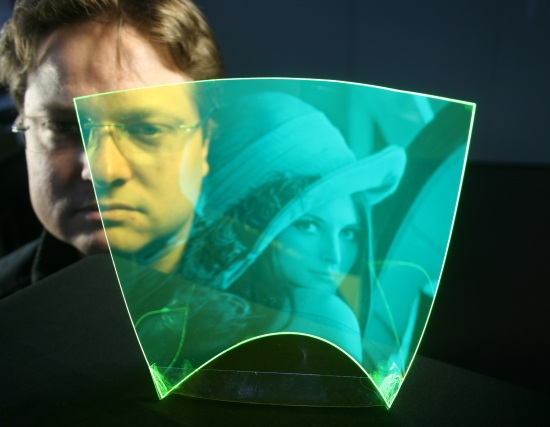Featured Products
Researchers at the Johannes Kepler University Linz, Austria have developed a transparent image sensor, that could radically alter the design of digital cameras.
Digital cameras look the way they do because of the image sensor’s technology and shape. Scientists in Austria at the Johannes Kepler University have developed a new type of image sensors. The new sensor is flat, flexible, and transparent, thus opening doors to endless possibilities in the development of digital cameras.

Austrian researchers developed a new transparent and flexible image sensor. For the time being, it can only capture black and white photography, but it will be soon modified to support high-resolution color images.
New image sensor will have enormous implications in multiple fields
According to the researchers, the new sensor could have enormous implications in the next-generation of smartphones, tablets, TVs, gaming consoles and other devices which can be controller with gestures. Additionally, it could be used in digital cameras as well as medical scanners.
The new sensor is based on a luminescent concentrator, which represents a special type of polymer film. It is coated in fluorescent grains capable of absorbing certain portions of light wavelengths, then re-emitting light at other wavelengths.
The technology at the basis of the sensor is radically different from the one found in charge-coupled devices, one of the most popular types of image sensors found in digital cameras.
X-ray technology helped the researchers further their project
The LC gathers light and sends it to the sensor’s edges. The researchers came up with a way of deducing in which point the light entered the surface. They managed to adapt the X-ray technique used in computed tomography, the major difference being the fact that the sensor uses visible light, rather than X-rays.
Current resolution is pretty low as it reaches only 32 x 32 pixels. However, the Austria-based scientists used very cheap photodiodes and they confirmed that the sensors will be improved in the near future. For the first try, they only wanted to prove that their theory is correct and could provide a practical solution for future devices.
Soon, the researchers will increase the power of the imaging sensor, allowing it to capture higher resolution color images.
Motion-tracking devices, like Microsoft’s Kinect, could be in trouble
When it will finally be ready for prime time, the new transparent image sensor could provide gesture-control support, too. Its transparency will allow it to be integrated in TVs and other displays, thus reducing the need of motion-tracking devices.
It would be interesting to see whether camera manufacturers will take a closer look at this technology or not.






































